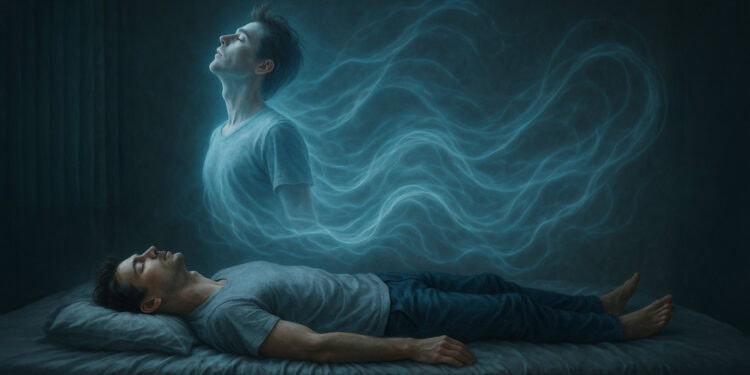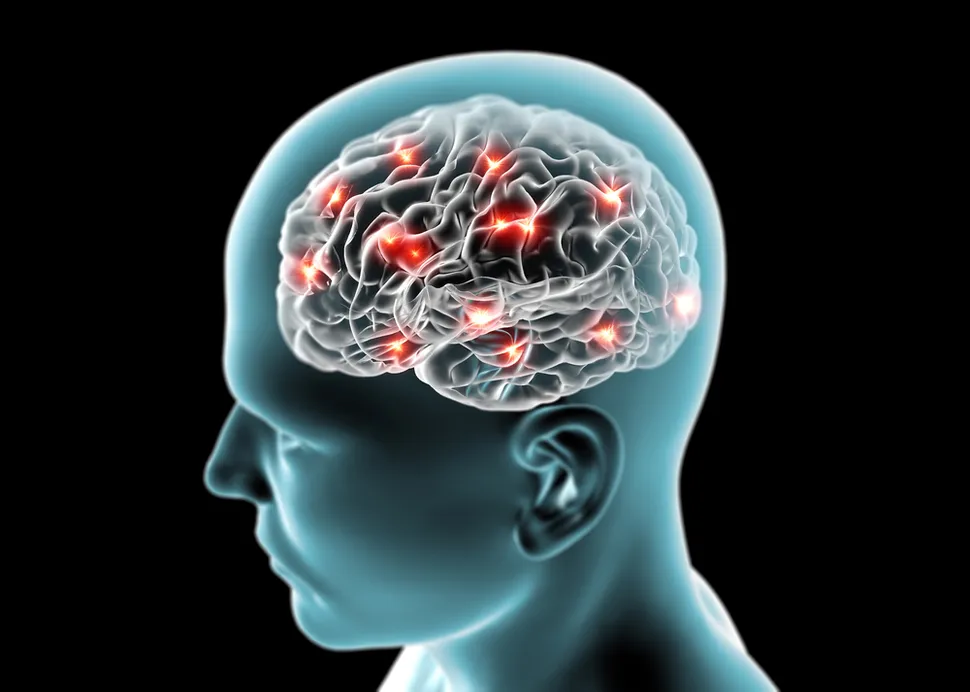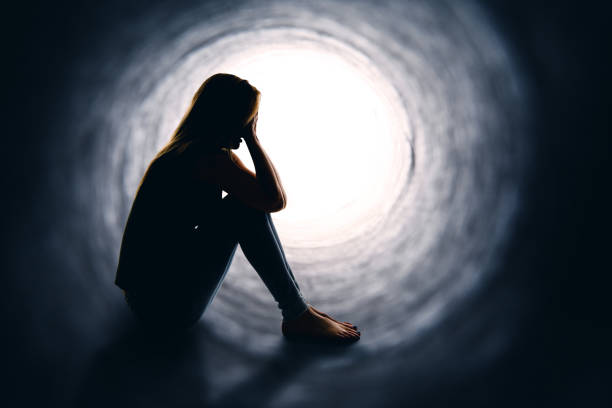Imagine floating above your own body, looking down at yourself as if you were both observer and observed—detached from the skin you wear and the world you inhabit. For centuries, such out-of-body experiences (OBEs) have straddled the line between the mystical and the medical, treated by some as spiritual awakenings and by others as signs of illness.
But what do OBEs really mean? Are they symptoms of psychological distress—or can they be something more? A new study published in the journal Personality and Individual Differences takes a bold step toward answering these questions. Led by Marina Weiler, an assistant professor of psychiatry at the University of Virginia, the research reveals that people who experience OBEs are significantly more likely to report symptoms of trauma, dissociation, and mental health struggles. Yet the story is more nuanced than it seems.
The Liminal World of Out-of-Body Experiences
Out-of-body experiences are often described as vivid and startling. People say they feel like they’re floating above themselves, watching their physical body from an external vantage point—sometimes in hospitals during surgery, other times during sleep, trauma, or extreme emotional states. For some, OBEs are awe-inspiring and even life-changing. For others, they are frightening, alienating, and difficult to explain.
Weiler, who has spent years listening to the firsthand accounts of OBE experiencers, has seen a disturbing pattern: shame, secrecy, and stigma.
“Many experiencers are reluctant to share their stories,” Weiler said. “They often fear they’ll be dismissed as mentally ill or labeled ‘crazy.’ There’s a significant stigma around OBEs, partly because they’ve been historically linked to psychiatric conditions.”
Previous studies have suggested OBEs may be tied to dissociative identity disorder, schizophrenia, borderline personality disorder, and other conditions that affect one’s sense of body ownership or identity. But could OBEs be something else—a misunderstood phenomenon, a coping mechanism, or even a form of healing?
Searching for Patterns in the Data
To dig deeper, Weiler and her colleagues surveyed 545 adults from various backgrounds. About half—256 people—reported having experienced at least one out-of-body episode. The other 289 had not. All participants were asked to complete a battery of standardized psychological tests and questionnaires, measuring everything from anxiety and depression to dissociation, trauma history, and social functioning.
The researchers used well-established clinical tools, including the Self-Reporting Questionnaire (SRQ), the Dissociative Experiences Scale (DES), the Childhood Trauma Questionnaire, and the Social Adjustment Scale, among others. These instruments provided a comprehensive snapshot of each participant’s psychological health.
The results were sobering. Participants who had experienced OBEs scored significantly higher on nearly every measure of psychological distress. They were more likely to report symptoms of depression, anxiety, and social difficulties. They also showed higher rates of dissociation—feelings of being emotionally numb, disconnected, or experiencing memory gaps. And they reported more adverse childhood experiences, including emotional neglect and physical abuse.
Notably, 40% of those in the OBE group scored in the clinically concerning range on the dissociation scale, compared to just 14% of those who had never had such experiences. Over half (53%) of the OBE group met criteria for being at risk of a common mental disorder, compared to 44% of their counterparts.
A Surprising Revelation
The findings contradicted the researchers’ original expectations.
“We initially hypothesized that individuals experiencing OBEs would demonstrate better mental health, given how often people describe them as transformative or spiritually meaningful,” Weiler admitted. “Instead, we found the opposite.”
But rather than pathologizing OBEs outright, the team proposed a more compassionate, layered interpretation: that OBEs may serve as psychological coping mechanisms—especially in individuals with histories of trauma. In this view, OBEs are not necessarily signs of illness, but rather the mind’s attempt to escape or survive unbearable emotional pain.
“Our findings related to childhood trauma suggest OBEs might serve a protective function,” Weiler said. “They may provide a psychological distance from traumatic experiences—a sort of emergency exit for the self.”
Beyond the Numbers: The Human Element
While the statistical differences were significant, the clinical picture is more complex. OBEs do not automatically indicate mental illness. In fact, many people describe them as deeply meaningful, positive, and even healing. Some say their OBE changed their life perspective, made them less afraid of death, or helped them process trauma in new ways.
That’s why Weiler emphasizes caution in interpreting the results.
“Just because there’s a statistical association doesn’t mean we should treat all OBEs as symptoms of pathology,” she explained. “For some individuals, yes, they may be tied to distress. But for others, they might represent a turning point—a psychological breakthrough rather than a breakdown.”
Indeed, the study found that those who had more recently experienced their first OBE were more likely to report emotional distress, hinting that the timing and context of the experience matter. An OBE during a time of crisis may signal acute psychological strain. But one during deep meditation or sleep might be part of a broader, adaptive mental process.
The Risk of Stigmatizing What We Don’t Understand
One of the dangers of this research, Weiler notes, is the risk of adding to the stigma experiencers already face. She hopes that by exploring the complexity and diversity of OBEs, the medical and scientific communities can move toward understanding rather than judgment.
“OBEs are incredibly personal and subjective experiences,” she said. “It’s important to recognize that they don’t all have the same cause or meaning.”
Weiler’s goal is not to label, but to listen—to open the door for deeper dialogue between experiencers and professionals. She hopes her work will eventually guide mental health practitioners in how to respond more thoughtfully and effectively when patients report OBEs.
What This Means for Science—and for Us
While the study’s insights are valuable, its limitations should also be acknowledged. It relied on self-reported data, which can be influenced by memory errors or personal interpretation. And while the psychological tools used are widely accepted, the exact meaning of a “clinical” score varies depending on context.
Importantly, the study didn’t investigate the content or subjective meaning of the OBEs themselves. Were they terrifying? Ecstatic? Healing? Did they occur in moments of trauma, meditation, sleep paralysis, or something else entirely? These unanswered questions point the way for future research—perhaps with brain imaging, interviews, and long-term tracking of experiencers over time.
For now, the study’s main message is clear: out-of-body experiences are far more common—and far more complex—than many people think.
Reframing the Narrative
Ultimately, Weiler sees this study as just the beginning. Her long-term vision is to shift the public conversation about OBEs—from one of suspicion and stigma to one of curiosity and care.
“My hope is that people who’ve had these experiences can speak openly about them without fear of being misunderstood,” she said. “We need to stop asking only what’s wrong with experiencers and start asking what these events might be trying to tell us about the human mind, resilience, and consciousness itself.”
In a world where many realities remain invisible—grief, trauma, imagination, and mystery—perhaps it’s time we make room for one more: the out-of-body experience. Not as a defect, but as a doorway.






